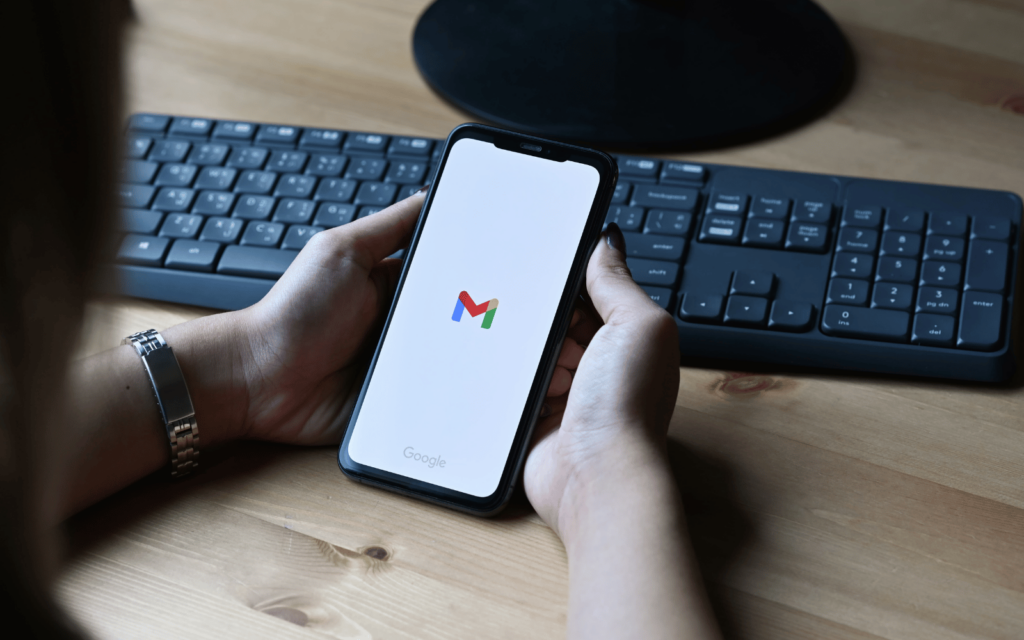When Gmail first launched in 2004, one of its standout features was an abundance of storage. Instead of the small quantities offered by Hotmail and Yahoo Mail, Gmail gave each user a whopping 1GB of space. Instead of painstakingly trying to (constantly) delete emails and stay on top of your inbox, the theory went, you could just search for whatever email you needed.
Web-based email was still a newish service then. Hotmail had launched in 1996 with 2MB of storage and was bought by Microsoft the following year for $400m. The idea of hosting your email in what would become the cloud, was still a novel approach. Until then, you either had to use a corporate email service, like Microsoft Outlook, or pay an internet service provider (ISP) for a mailbox.
Back then, most consumers pulled down their email to their computer (on a dial-up telephone line) and the horror stories of lost mail were legendary. This was called POP. But it required you to have an address for your ISP (like @mweb.co.za or @iafrica.com), and sometimes pay extra for that mailbox. My first email address was toby@icon.co.za – an early service offered by the country’s first ISP, Internet Solutions, and tech megastore Incredible Connection.
Web-based email offered a nascent cloud-based service because you could download a copy of your email (using a protocol called IMAP), meaning you could very easily access the same email from multiple devices.
“A nice way to bill us”
Gmail very quickly became the dominant such service, offering many advantages (not just the generous storage) and would become the foundation for what is now a sophisticated suite of offerings, like Google Docs, Drive and photo storage. To entice users, Google offered this for free. To compete with Outlook (still the dominant corporate email), Google started offering its own hosting service called G Apps. For nearly 15 years, this was a free service, which I have gleefully used. Combined with what is now called Google Workspace, it evolved into a very good combination of creating and sharing text documents
But in the 20 years since Gmail introduced its numerous innovations, it has become, well, a nice way for Google to bill us.
From its origins as a “don’t bother to delete” service, it now charges you to host your email. If you host your own domain, like we do at Stuff, the bills just keep rising. Google realised it had a captive audience (literally) and began billing us. All of us.
At the same time, its business model evolved. In the early days, Gmail was funded by displaying advertising – which was a privacy nightmare (and portent of the surveillance capitalism to come) as it scanned your email to show those adverts.
But, as the Google data-hoarding began, it evolved to snooping on us everywhere on the internet – resulting in the programmatic advertising that has destroyed both our digital privacy and the media industry.
As I wrote for Forbes, Google’s “dominance” succeeded where Apartheid couldn’t – forcing South Africa’s Fourth Estate onto “its knees”.
While the free Gmail account and Google Apps were great, the two main reasons I switched my domain hosting to Gmail were because of two utterly necessary features: search and filtering spam.
Originally it did both of these well. Lately, not so much.
Earlier this year, Google warned me that I had reached the 15GB limit per Gmail mailbox and doubled the monthly hosting fee for my other domains. I have spent two months deleting old emails and attachments, but I’m still over the limit.
Read More: Five of Gmail’s best features (that Google doesn’t tell you about)
I’m not the only one. A friend called this week to complain about the same thing. Let’s call him Peter.
To fix it, there is little choice but to manually sort and delete emails. Gmail’s web interface only displays 100 emails at a time, which means endless wasted hours of selecting and deleting. You can do a search for some email addresses or subject lines and delete those in batches. But ultimately, all the time Google promised us originally by not having to practise Inbox Zero has just come back to haunt us.
The internet is awash with helpful articles about “How to free up space in Gmail” or “What to do when you run out of Gmail storage”. I got thousands of answers when I searched DuckDuckGo for this topic. (I haven’t used Google Search for nearly seven years now.)
Gmail and its abundant storage solutions were one of the many great original ideas that Google introduced in its early, innovative days – when its mission statement was “Don’t be evil”.
Those days – and the consumer goodwill it generated – are long gone.



